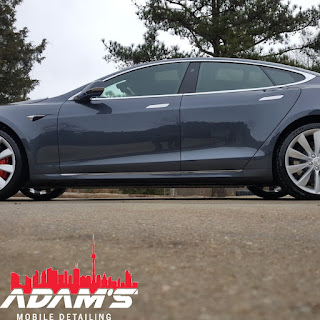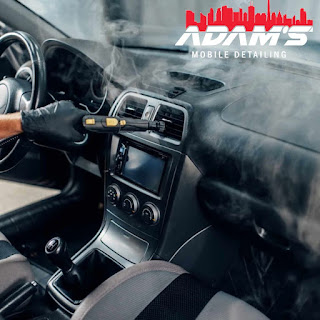What Is Paint Correction?
A term often used by professional car detailers as well as car cleaning enthusiasts all over the world to describe the method of restoring and revitalizing the appearance of a car's paintwork, typically through the removal of imperfections on the surface that dull or cause oxidation, or cloud paintwork by reflecting light in different directions, thereby hindering a perfect, straight, and clean reflection.
These imperfections can be found in swirl marks and fine scratches such as bird dropping etching and acid rain etching. They also include holograms, rain etching buffer trails, and random deeply scratched (or the RIDS). Car Paint correction services Toronto is a term that should only be used when these imperfections have been properly eliminated and not simply covered or concealed by filler-based products.
The process of correcting involves a small quantity of clear coating or paint that is eliminated from the substrate using the help of abrasive polishes. These are applied and worked into using the appropriate polishing equipment to smooth out the surface.
Before painting corrections are performed, a thorough wash and decontamination of the vehicle are completed. Paintwork is cleaned and scrubbed to eliminate any dirt or debris floating around. Following the wash, the process is made clayed using a specialist automotive clay bar that effectively removes any surface contaminants, including the fallout of industrial processes and tar spots.
It is crucial to get rid of these contaminants before painting correction in case they get caught and dislodged in the polishing pad of the machine; they could cause damage to the surface quickly. It also assists in making the surface smooth, which lets the polishing machine easily move across the surface, which reduces the chance of hopping or sticking that occurs. Additionally, claying paintwork allows you to accurately monitor the progression of the correction process since you can observe the actual situation of the surface as you work.
Polishing is typically an ongoing process that involves multiple stages with a range of types of polishes utilized, which range from more powerful cutting chemicals, which take away the surface material, and cleaner products that then eliminate any marks that more powerful products might have caused and in turn, polish the finish.
When a paint correction procedure is being carried out, it is normal to have a gauge for the depth of the paint to be utilized. It measures the depth of paint that is applied to the metal panel. It is utilized before, during, and following the process to check the amount of removed material. It is also used to ensure that excess paint is not removed, which could make the paint a thin layer or cause irreparable damage, such as an impact on the paint. Specialized LED or halogen lamps that mimic the effect of direct sunlight hitting the metal surface can also be utilized to assess the paintwork's state and determine how well surface imperfections and scratches are removed.
A few imperfections or scratches may be too deep or extreme to be removed without risking the removal of too much of the clear coat. They can be reduced and minimized to the maximum extent possible by employing techniques that utilize the polisher machine and other products that smooth the edges of scratches, making them less obvious in direct sunlight.
After correction, the panels are cleaned down with alcohol called isopropyl, which removes any oil that might have remained from the polish. This reveals the natural finish and any other areas which might be missed or need an extra bit of work. Once the correction is completed, the paintwork will shine beautifully and reflect stunningly because no scratches or imperfections can scatter or reflect the light beams in various directions.
Paint correction is a labor-intensive procedure and is typically the longest-running element of the car cleaning process. Therefore, it is high prices from professional detailers and cleaners. However, amateurs or even enthusiasts should attempt to make corrections to their work when they are comfortable doing it or have the necessary expertise to do it with safety.
In the end, paint correcting is the method of eliminating imperfections and scratches from the vehicle's paintwork. This requires the use of machine polishers as well as a variety of polishing tools. it is crucial to recognize paintwork that is truly repaired and which has been treated with products specifically intended to cover and mask imperfections on surfaces, like an all-in-one polish, for instance.
It is not appropriate to refer to it as a correction of paint even when no blemishes or scratches are evident since they are not actually eliminated and remain beneath the fillers of the product, that over time, be removed and revealed again.
And are you searching for Paint Correction in Vaughan also ? So, we recommend you investigate Car Paint correction Vaughan.
Read more related blogs: -
https://adamsmobiledetailing.blogspot.com/2022/08/what-are-benefits-of-car-detailing.html
Visit Our Website: - https://adamsmobiledetailing.ca/
Call Us On: - 647-532-6942



.jpg)
Comments
Post a Comment